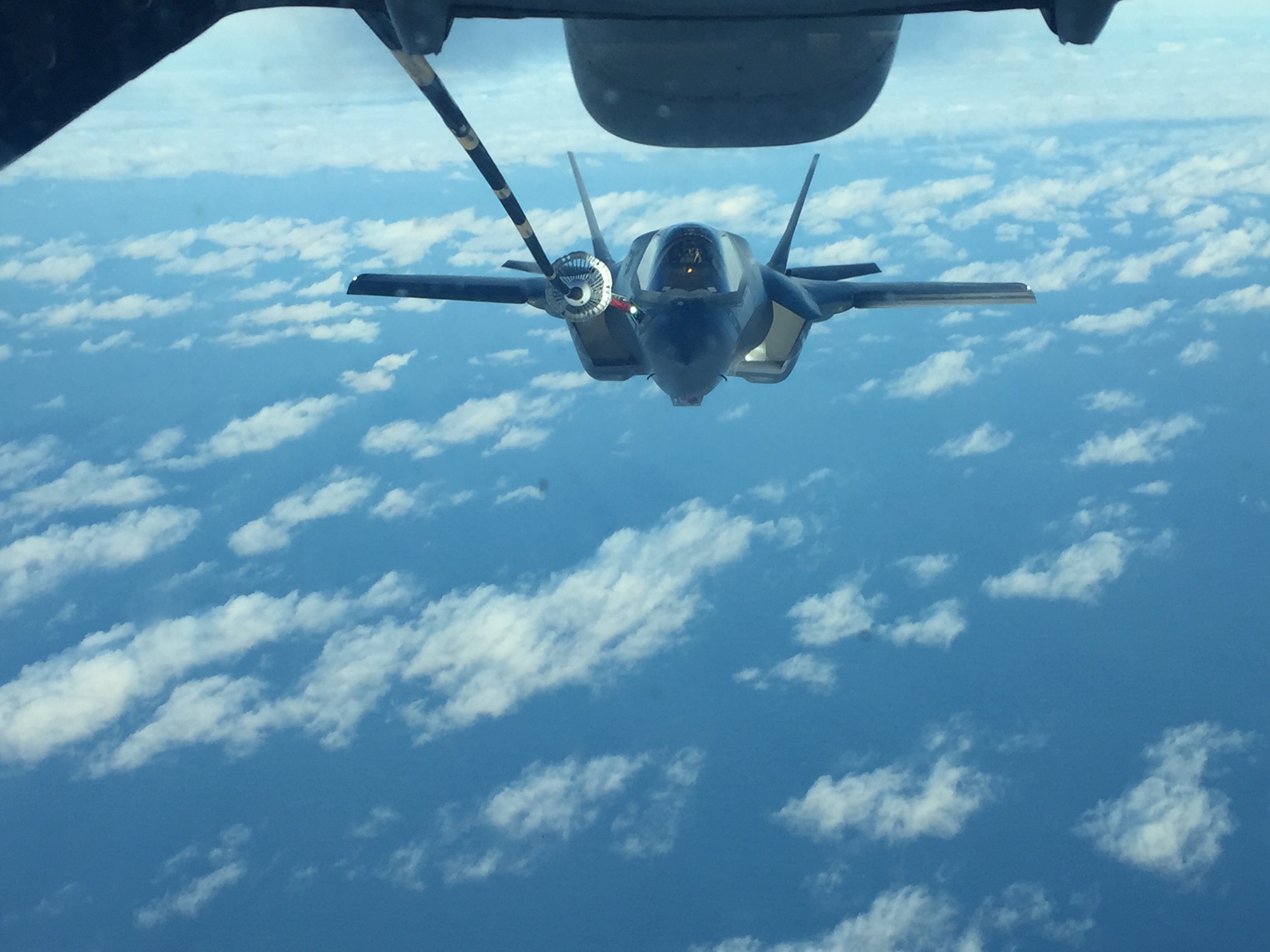An F-35B Lightning II aircraft assigned to Marine Fighter Attack Squadron 121 receives fuel from a Travis AFB, Calif., KC-10 Extender as the aircraft makes the flight across the Pacific Ocean, Jan. 18, 2017. Courtesy photo.
The first overseas deployment of the military’s newest fighter grabbed headlines across the world, but behind the F-35B deployment was a huge team of planners, pilots, and maintainers flying some of the oldest aircraft in the military’s inventory.
Nine tankers enabled the deployment of 10 US Marine Corps F-35Bs, flying from the continental United States, across Alaska and the Pacific Ocean, before touching down at MCAS Iwakuni, Japan, on Jan. 25.
The tankers refueled the F-35s a total of 250 times on the coronet mission, passing 766,000 pounds of fuel. Air Mobility Command and Air Combat Command crews spent three weeks planning the mission, AMC spokesman Col. Chris Karns said.
“Fighters are thirsty aircraft and the F-35 is no exception,” Karns said. “The F-35 affords a tremendous capability, but the effects-enabling tanker piece is equally important to national defense. Without it, the F-35’s global reach on demand does not occur.”
USMC Lt. Gen. Jon Davis, the Marine Corps’ deputy commandant for aviation, said his service is looking to change tanker plans for long-distance F-35 flights in an attempt try to cut back on the number of refuelings needed. The aircraft in this case did not use fuel pods, and flew much of the time with their refueling probe exposed.
The ACC Air Operations Squadron plans the refueling schedule, looking at variables such as route, fighter configuration, altitudes, airspeeds, and timing. The AOS serves as an air operations center for all combat aircraft, for all services, Karns said. This deployment was planned just like any other coronet mission—a flight where aircraft cannot land to refuel.
While there were minor delays because of weather, the aircraft arrived on time.
Davis also highlighted the 2016 flight of F-35s to the Royal International Air Tattoo airshow in England as another flight that required a lot of refueling. During this deployment, two KC-10s and one KC-135 refueled three F-35s a total of 30 times during a flight from Luke AFB, Ariz., to RAF Fairford, England. About 168,400 pounds of fuel was transferred during this flight.
As the Air Force, Marine Corps, and Navy adopt the F-35, that means there will be an increased demand for USAF tankers. This shows the need for the KC-46 Pegasus to come online and help carry this load, Karns said.
“As the fighter force increases, it is apparent that global tanker demand and potential future threats will drive an increase for the next generation of tankers,” Karns said.
